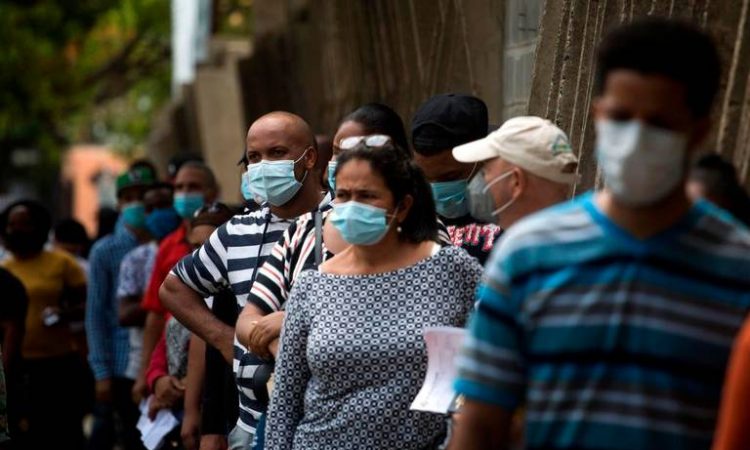
The Dominican Republic is leading the Caribbean in COVID-19 infections, leaving the healthcare system strained and hospitals on the verge of overflow.
On May 21, the government lifted the state of emergency that started on March 20 and announced a plan to gradually begin reopening the economy, with businesses operating normally by July 1 and mass gatherings allowed by August 24.
On June 16th, the plan had to be put on pause.
“The success we have had in previous phases in controlling COVID has caused us to lose fear as a society and as a consequence, to increase social contact and neglect the use of masks. In losing our fear of the virus, we run the risk of putting the health of the Dominican people at risk,” Gustavo Montalvo, Director of the High Commission to Control Coronavirus in the Dominican Republic, said while announcing that the government would not continue reopening the economy until the situation improved.
Ministry of Health data shows that the government continued to lift restrictions while the average daily number of new COVID-19 cases was increasing. The seven-day rolling average of new cases per day was rising steadily during the state of emergency, leveling off to around 330 new cases per day for a couple of weeks when the state of emergency was first lifted for Phase 1 of reopening on May 20 before climbing steadily after the country entered Phase 2 to more than 1,500 by Aug. 1.
“For me this was a mistake,” Dr. Santos Ramírez, anesthesiologist and former president of the Dominican Medical Society. “What happened was the government had a lot of political pressure during the elections… They had a lot of pressure and they had to open and when they opened they didn’t put in place measures of control in places of mass gathering like markets.”
Dr. Ciro Urgarte, director of the Health Emergency Department at the Pan American Health Organization, pointed to this dynamic as a key factor in the high infection rate now seen in the Dominican Republic.
“This process saw a significant increase in cases during the last phases,” he said. Adding that among the population “there was a low perception of risk.”
The Dominican Republic has 674 cases per 100,00 people, more than any other country in the Caribbean. The country also had more coronavirus deaths than any other in the region adjusting for population besides Bermuda, while still maintaining a low mortality rate.
The second state of emergency was announced on July 20 with quarantine measures, reversing course from Phase 2 reopening, which allowed 100 percent of workers returned to small companies and half to return to companies with more than 151 employees.
One week after the state of emergency was declared, 75 percent of regular hospital beds for COVID-19 patients were full across the country and 100 percent were full in Santo Domingo, the capital. Intensive care units were also nearly full, at 71 percent capacity, according to Rafael Sánchez Cárdenas, minister of public health.
Ramírez said that since rural hospitals were not equipped to treat patients, patients went to the cities and overwhelmed the hospitals.
“The people migrated searching for better care,” he said “At one moment they had to send patients back to the provinces. Here, for example, in the hospital Marcelino Vélez they reported that all of the beds were full and they were still taking people into the COVID unit so they could sit in a chair with an oxygen tank.”
The United States Embassy published a warning to avoid travel to the Dominican Republic, adding: “Medical care is severely limited with many hospitals at or near full capacity…many hospitals no longer have beds vacant for COVID-19 and are no longer able to accept new COVID-19 patients.”
Thirty-three percent of COVID-19 tests are positive (positivity rate), suggesting cases are being substantially under-counted because not enough testing is being done. Experts say a positivity rate of below five percent indicates most cases are being accounted for by tests.
The government scrambled to add hospital and ICU beds for COVID-19, adding more than one hundred in a week but hospitals remain 77 percent full nationally and in Santo Domingo as of August 4. ““The pressure from the demand for hospital beds has dropped in the national district,” Cardenas said.
From Miami Herald.






